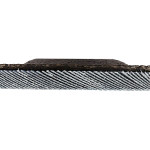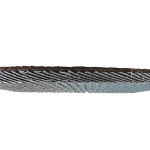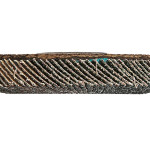Flap discs are a popular choice in metal fabrication with the ability to provide blending, grinding and finishing for an item. Plus, the flap disc is appreciated for its low vibration in use, which means the operator experiences less fatigue. Here are a few steps involved in selecting the right flap disc:
Disc shape
The flap disc is designed with a choice of shapes to make it possible to work flat or at an angle. The different shapes include the flat or conical. The flat shape is favored for finishing and used mostly on flat surfaces, while the conical is more practical for extensive stock removal.

This is Type 27 Flat Shape

This is Type 29 conical type
Backing plate
The material of the backing plate is a further important point to consider when choosing the right flap disc. The backing plate is there to give a certain degree of stability while the disc is in use. Aluminum, plastic and fiberglass are the most popular choices.
Aluminum is a practical choice for applications that demand rigid support and high-strength, but this option is the least popular choice in the market. Plastic is growing in popularity and gives great versatility with the option to trim the backing plates to a preferred shape or size. This means it is more useful when it comes to finishing or blending. Fiberglass is a practical choice for those operators that want to cut down on vibration while in use and seen as the best option for most applications because of its light weight and high strength.
Abrasive densities
The spacing, angle and quantity of the flaps in use can differ significantly. For the best results it is important to match the abrasive density to the specific application.

This is a regular density Flap disc

This is a High density Jumbo flap disc
Abrasive grit
A major aspect of the flap disc is the grit size. For metal work applications there is a choice of three types, including aluminum oxide, zirconia alumina and ceramic alumina.
The aluminum oxide is a great choice for smaller jobs and provides a low-cost and consistent option. It is seen as the first type of metalwork abrasive. Zirconia alumina is designed to combine aluminum oxide and zirconia which makes a practical choice for working with mild steel or carbon applications. Ceramic alumina is a further choice and one of the latest choices on the market. This type of grit has a grain that is designed to micro fracture which means it is able to stay sharp for a lot longer than most other alternatives. Plus, the ability to stay sharp for longer means the cutting time is reduced.





